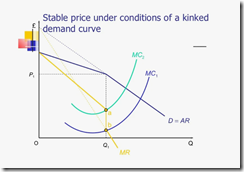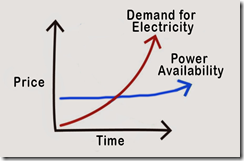AI Dreams Are Plugged into Big Rock Candy Mountain
November 5, 2025
 Another short essay from a real and still-alive dinobaby. If you see an image, we used AI. The dinobaby is not an artist like Grandma Moses.
Another short essay from a real and still-alive dinobaby. If you see an image, we used AI. The dinobaby is not an artist like Grandma Moses.
One of the niches in the power generation industry is demand forecasting. When I worked at Halliburton Nuclear, I sat in meetings. One feature of these meetings was diagrams. I don’t have any of these diagrams because there were confidentiality rules. I followed those. This is what some of the diagrams resembled:

Source: https://mavink.com/
When I took a job at Booz, Allen, the firm had its own demand experts. The diagrams favored by one of the utility rate and demand experts looked like this. Note: Booz, Allen had rules, so the diagram comes from the cited source:

Source: https://vtchk.ru/photo/demand-curve/16
These curves speak volumes to the people who fund, engineer, and construct power generation facilities. The main idea for these semi-abstract curves is that balancing demand and supply is important. The price of electricity depends on figuring out the probable relationship of demand for power, the available supply and the supply that will come on line at estimated times in the future. The price people and organizations pay for electricity depend on these types of diagrams, the reams of data analysts crunch, and a group of people sitting in a green conference room at a plastic table agree the curves mean.
A recent report from Turner & Townsend (a UK consulting outfit) identifies some trends in the power generation sector with some emphasis on the data centers required for smart software. You can work through the report on the Turner & Townsend Web site by clicking this link. The main idea is that huge AI-centric data centers needed to power the Googley transformer-centric approach to smart software outstrips available power.
The response to this in the bit AI companies is, “We can put servers in orbit” and “We can build small nuclear reactors and park them near the data centers” and “We can buy turbines and use gas or other carbon fuels to power out data centers.” These are comments made by individuals who choose not to look at the wonky type of curves I show.
It takes time to build a conventional power generation facility. The legal process in the US has traditionally been difficult and expensive. A million dollars won’t even pay for a little environmental impact study. Lawyers can cost than a rail car loaded with specialized materials required for nuclear reactors. The costs for the PR required to place a baby nuke in Memphis next to a big data center may be more expensive than buying some Google ads and hiring a local marketing firm. Some people may not feel comfortable with a new, unproven baby nuke in their neighborhood. Coal- and oil-fired plants invite certain types of people to mount noisy and newsworthy protests. Putting a data center in orbit poses some additional paperwork challenges and a little bit of extra engineering work.
So what’s the big detailed report show. Here’s my diagram of the power, demand, and price future with those giant data centers in the US. You can work out the impact on non-US installations:

This diagram was whipped up by Stephen E Arnold.
The message in these curves reflects one of the “challenges” identified in the Turner & Townsend report: Cost.
What does this mean to those areas of the US where Big AI Boys plan to build large data centers? Answer: Their revenue streams need to be robust and their funding sources have open wallets.
What does this mean for the cost of electricity to consumers and run-of-the-mill organizations? Answer: Higher costs, brown outs, and fancy new meters than can adjust prices and current on the fly. Crank up the data center, and the Super Bowl broadcast may not be in some homes.
What does this mean for ubiquitous, 24×7 AI availability in software, home appliances, and mobile devices? Answer: Higher costs, brown outs, and degraded services.
How will the incredibly self aware, other centric, ethical senior managers at AI companies respond? Answer: No problem. Think thorium reactors and data centers in space.
Also, the cost of building new power generation facilities is not a problem for some Big Dogs. The time required for licensing, engineering, and construction. No problem. Just go fast, break things.
And overcoming resistance to turbines next to a school or a small thorium reactor in a subdivision? Hey, no problem. People will adapt or they can move to another city.
What about the engineering and the innovation? Answer: Not to worry. We have the smartest people in the world.
What about common sense and self awareness? Response: Yo, what do those terms mean are they synonyms for disco biscuits?
The next big thing lives on Big Rock Candy Mountain.
Stephen E Arnold, November 5, 2025
Comments
One Response to “AI Dreams Are Plugged into Big Rock Candy Mountain”
Got something to say?



https://t.me/s/official_Legzo_ed